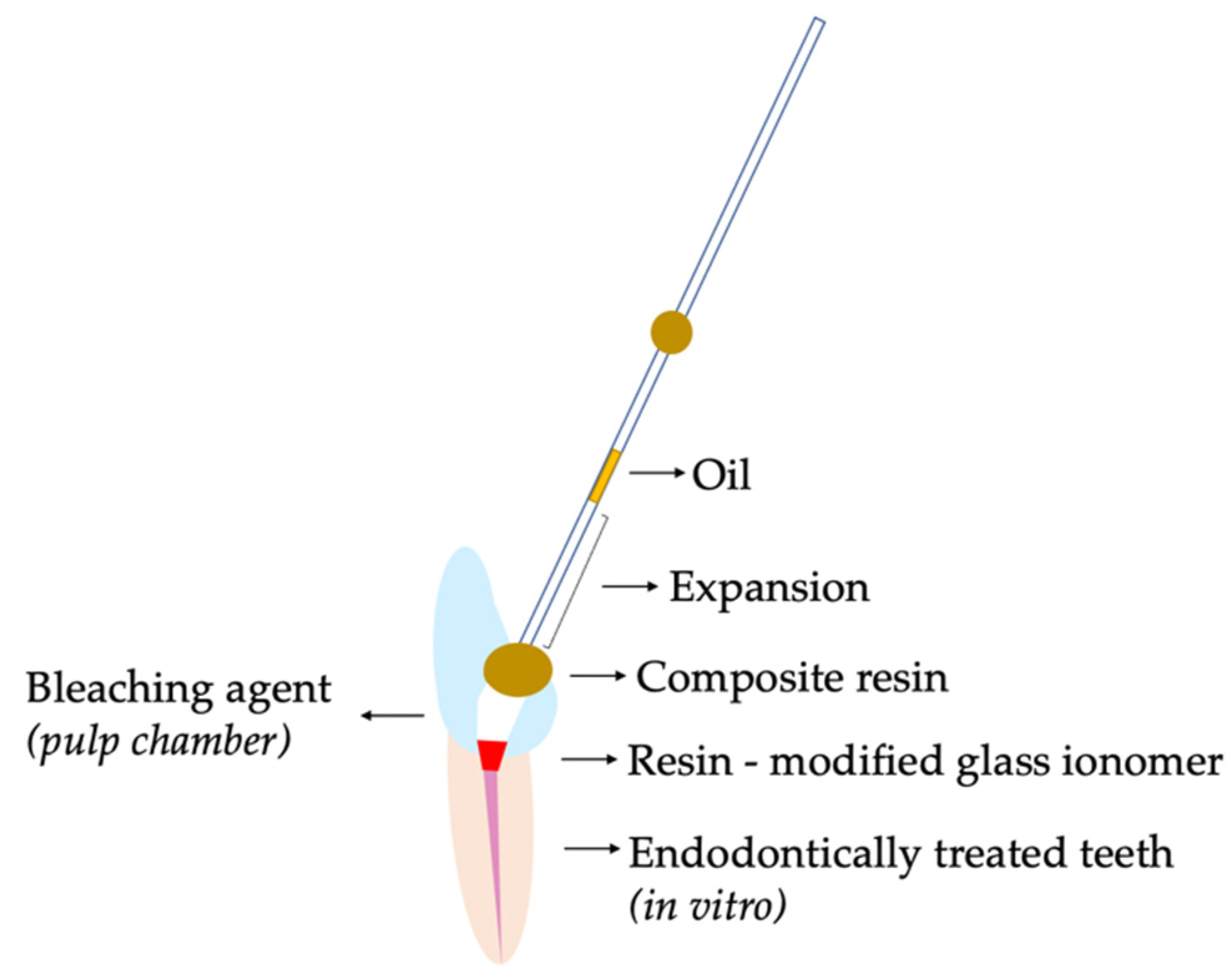walking bleach procedure
All teeth received traditional biomechanical root canal instrumentation after which the walking bleach agent was placed in the pulp chamber space. The effect of different concentration of carbamide peroxide was studied by Yui in 2008 10.
The occlusal access was sealed with one of five temporary materials.

. The walking bleach technique involves sealing a mixture of sodium perborate with water into the pulp chamber of the affected tooth a procedure that is repeated at intervals until the desired bleaching result is achieved. Both 35 hydrogen peroxide and 37 carbamide peroxide are highly effective for the walking bleach technique in nonvital teeth and achieve a high degree of color matching with the counterpart teeth. A hole is made into the space inside your tooth.
This procedure is safer that the other one and can be used if the former does not work or if you want to avoid cervical absorption. The purpose of this study was to compare the in vitro sealing capacity of five materials each used as a temporary sealing agent for the walking bleach technique. Opalescence Endo non-vital whitening gel is formulated specifically to whiten endodontically treated discolored teeth using the walking bleach technique.
Spasser first described the bleaching technique in which he inserted a paste of sodium perborate and water into the access cavity 8. Even though the walking bleach technique is an established method 1 2 some problems have been reported that deal with the issue of technique placement sensitivity 3 4 5. However care should be taken.
Vaseline is applied to the lips and a rubber dam is applied to the tooth being whitened. In preparation for the walking bleach method a rubber dam was placed and the access cavity was re-opened. A material is placed over the top of the root canal filling to protect the tooth from the bleaching agent.
Carbamide peroxide discolored tooth nonvitai bleaching walking bleach The presence of discolored teeth is a serious esthetic problem and bleaching is the most conservative technique for improving their appearance- Nonvitai tooth bleaching is a current procedure in endodontics and esthetic dentistry with a high rate of success. Walking Bleach Technique Most common technique Sealing of the endodontically treated root canal with RMGI or GI Placement of the bleaching material in the pulp chamber Access cavity sealed with temporary restoration and recall after 2-7 days 24. Walking bleach and combined method.
All restorative and root sealing material was removed from the coronal pulp chamber and 2 - 3 mm below the healthy gingiva a. Indications for Internal Tooth Bleaching There are cases when internal bleaching is not performed. Generally the bleach technique uses a 30 H 2 O 2 as the primary oxidization agent.
In the thermocatalytic technique a heat source is used to activate the bleaching agent placed in the plup chamber through the release of nascent oxygen. The walking bleach procedure. WALKING BLEACH TECHNIQUE IN MAXILLARY CENTRAL INCISORS SANKET HANS PANDEY 1 PALLAV MAHESH PATNI1 PRADEEP JAIN.
The walking bleach technique which involves the usage of sodium perborate and water. Walking bleach or endodontic whitening provides a whitening solution for the many patients with one or more non-vital teeth. An in vitro study to measure microleakage of five temporary sealing agents Abstract The purpose of this study was to compare the in vitro sealing capacity of five materials each used as a temporary sealing agent for the walking bleach technique.
Non-vital teeth often appear darker than the rest of a patients smile due to internal bleeding caused by trauma the presence of necrotic debris or pigmentation as a result of previously used endodontic treatment materials. The walking bleach is the traditional bleaching method. Each gel resulted in a positive impact on patients esthetic self-perception and psychosocial self-perception after intracoronal whitening.
The cavity was cleaned thoroughly in order not to compromise the whitening result. Non-vital bleaching is a minimally invasive procedure to restore the esthetics of a discolored non-vital tooth. Once Opalescence Endo gel is delivered to the pulp chamber it should be sealed with a temporary cement and left in the tooth for one to five days.
After 1 week the procedure was repeated to achieve the desired results. This is the general procedure for the walking bleach technique. The walking bleach technique.
This technique was modified by Nutting and Poe when they replaced water with hydrogen peroxide in 1963 9. Sodium perborate changed irt 13. In the walking bleach technique a thick paste of sodium perborate mixed with hydrogen peroxide Fig.

Pdf Efficacy Of Barrier Materials In Walking Bleach Technique A Ph Diffusion Study

Unilite Endo Non Vital Bleaching

An Effective Bleaching Technique For Non

Bleach Foot Soak Homemade Foot Soaks Foot Soak Bleach Water

Applied Sciences Free Full Text Study Of The Intra Coronal Pressure Generated By Internal Bleaching Agents And Its Influence On Temporary Restoration Html

Pdf Nonvital Tooth Bleaching A Review Of The Literature And Clinical Procedures

Robot Check Dental Dentures Denture Repairs Dental Emergency

News And Events Ostrem Dental Robbinsdale Mn Dental Local Dentist Dentist

Ultra Conservative Management Of The Discolored Tooth Discolored Teeth Teeth Dentistry

Intracoronal Bleaching Of Nonvital Teeth Pocket Dentistry

Pdf Non Vital Tooth Bleaching Techniques A Systematic Review

Pdf Intracoronal Bleaching Of Discolored Nonvital Teeth

Two Minutes Walk Can Save Your Life Mahaelegancestylingsalon Salon Spa Mahaelegance Mahainternationalacademy Life Spa Salon Spa

Bleaching Procedures Pocket Dentistry

Pdf An Innovative Non Vital Walking Bleach Technique Drarpit Viradiya Academia Edu
Intracoronal Bleaching Of Nonvital Tooth Teeth Whitening

Kids Are Using Too Much Toothpaste Bad Dental Health Habits Delta Dental Of Arizona Blog Tips For Healthy Teeth Happy Smiles Dental Health Health Habits Mouth Health



Comments
Post a Comment